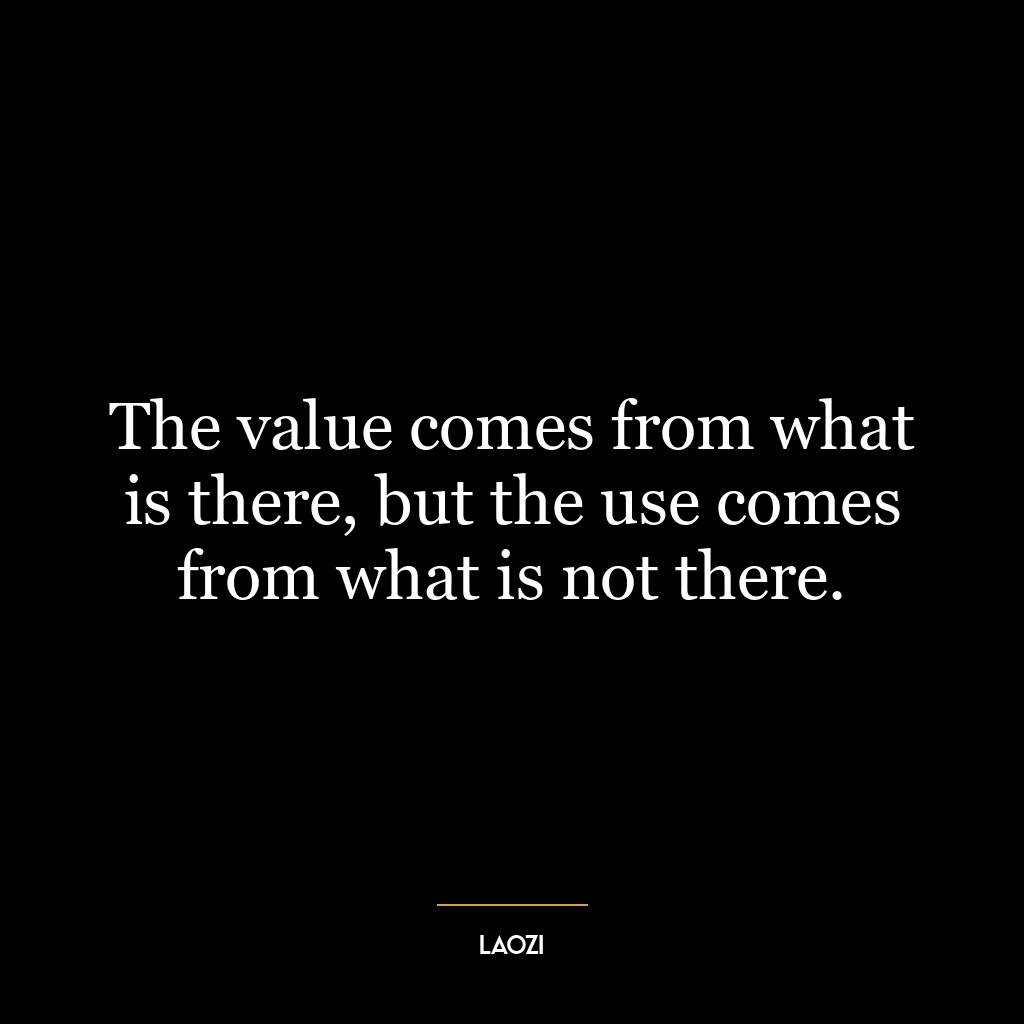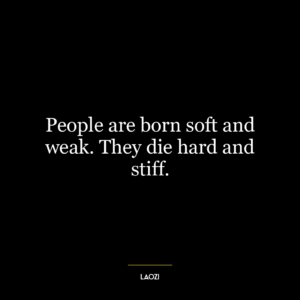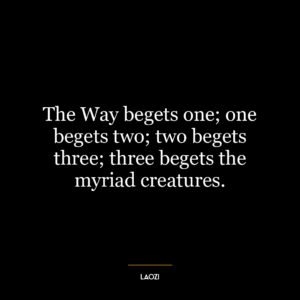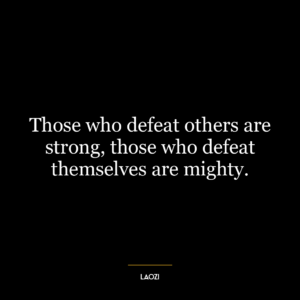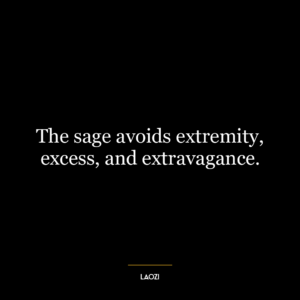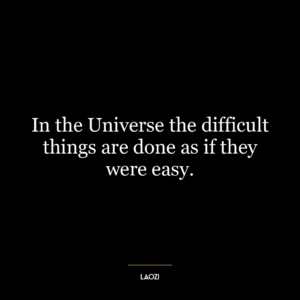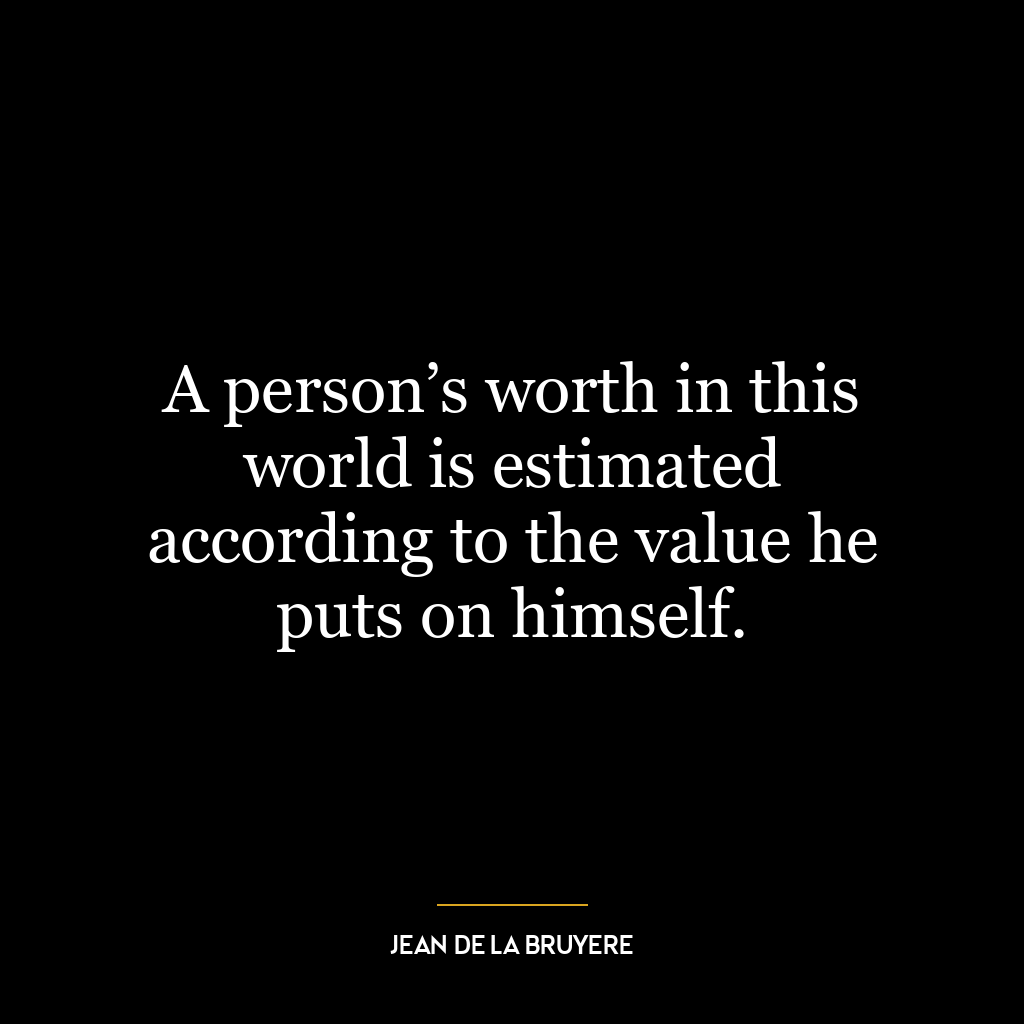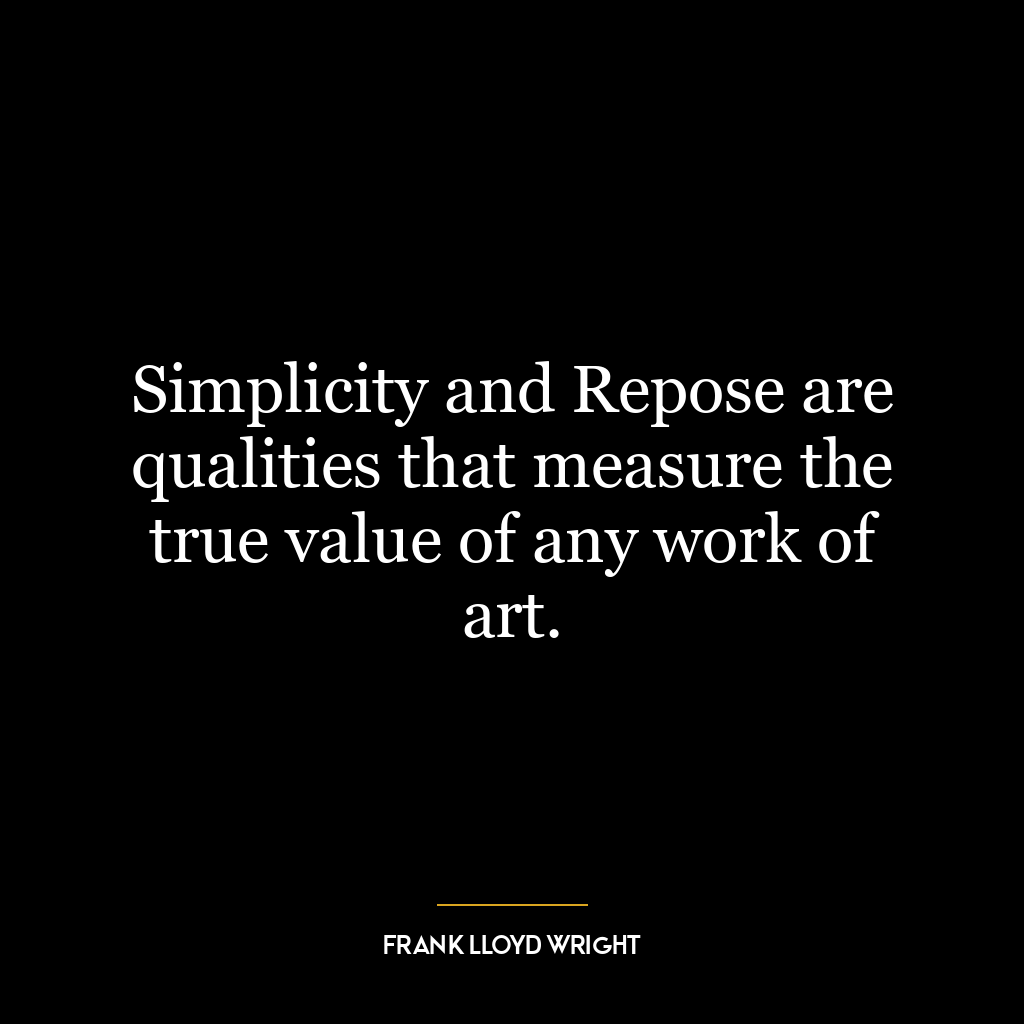The value comes from what is there, but the use comes from what is not there.
This quote is a reflection on the dual nature of existence, emphasizing the importance of both the tangible and the intangible. “The value comes from what is there” refers to the physical, observable, and measurable aspects of life. These are the things we can see, touch, and quantify, such as money, possessions, or achievements. They have value because they contribute to our survival, comfort, and social standing.
However, “the use comes from what is not there” implies that the unseen, intangible aspects of life provide utility and functionality. This could be our thoughts, emotions, relationships, or even the space around us. For example, a cup is useful not because of the material it’s made from, but because of the empty space inside it that can hold a liquid.
Applying this to today’s world, we can see this principle at play in many areas. In technology, it’s not the physical device that’s valuable, but the software, the data, and the connectivity it provides. In business, a company’s value is not just in its physical assets, but in its brand, its relationships with customers, and its employees’ skills and knowledge.
In terms of personal development, this quote encourages us to recognize and appreciate the intangible aspects of our lives. Our happiness and fulfillment don’t come just from material possessions or achievements, but from our relationships, our passions, and our personal growth. It also reminds us to create space in our lives for relaxation, reflection, and creativity. The “empty” times when we’re not busy with tasks and activities can be the most productive and fulfilling.

